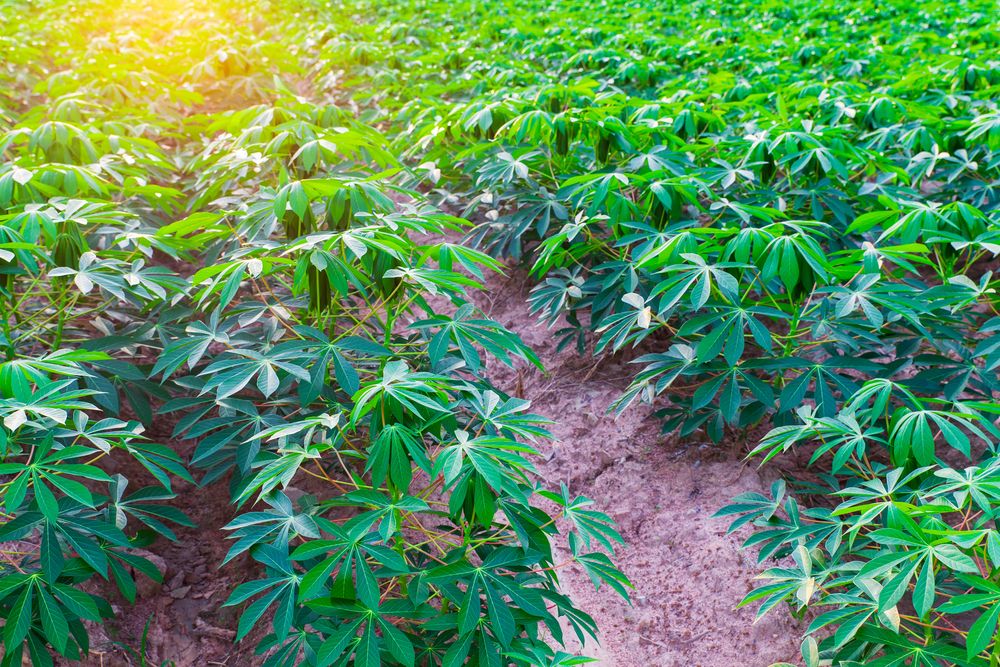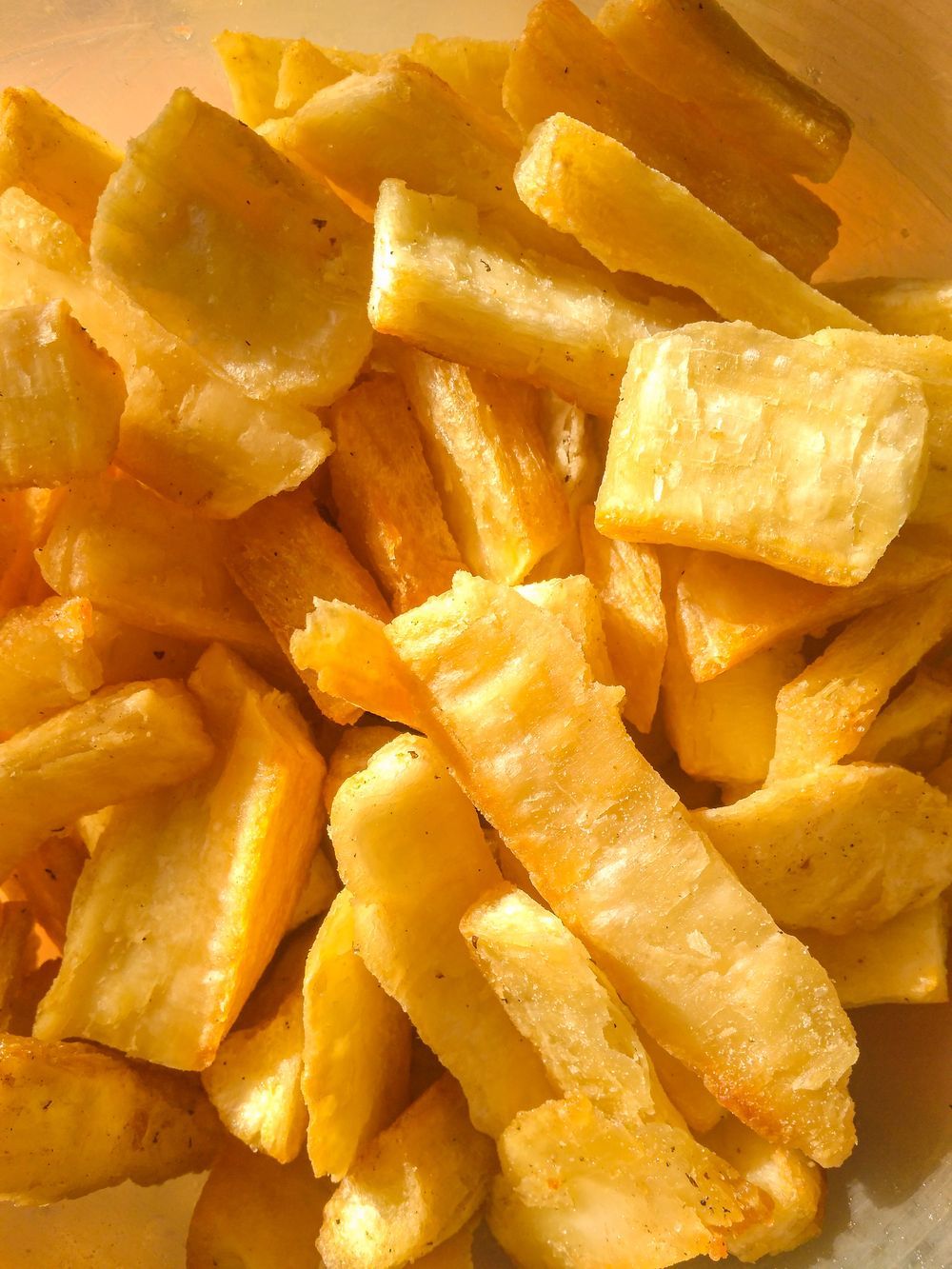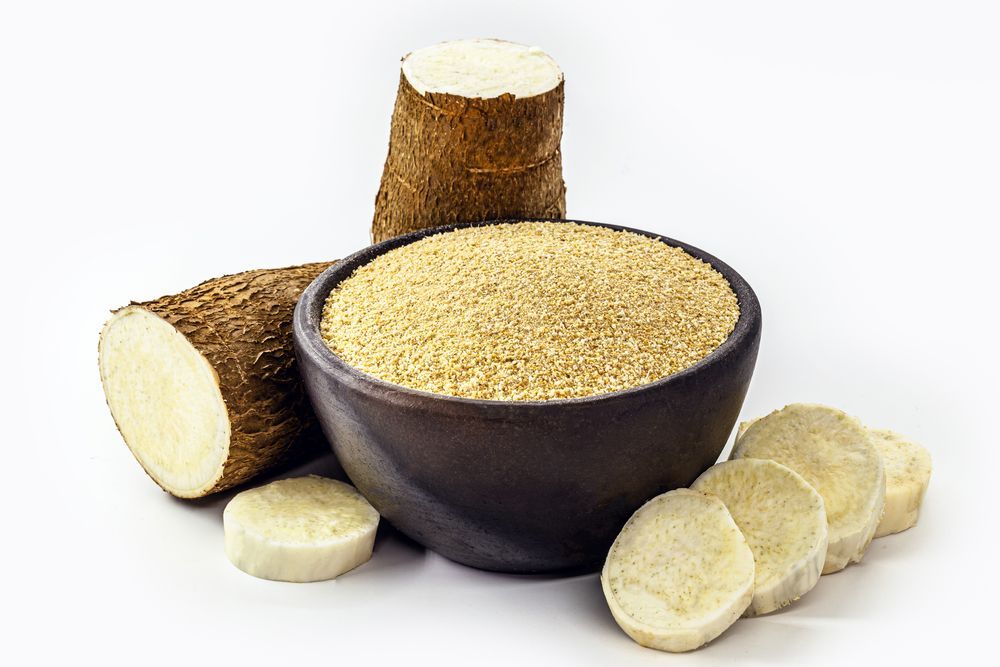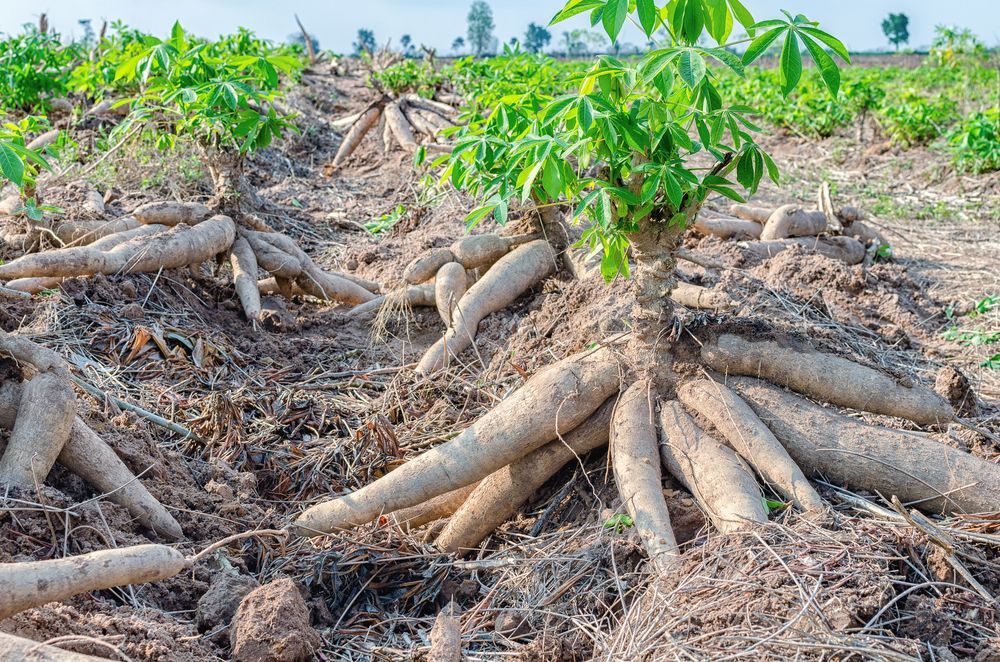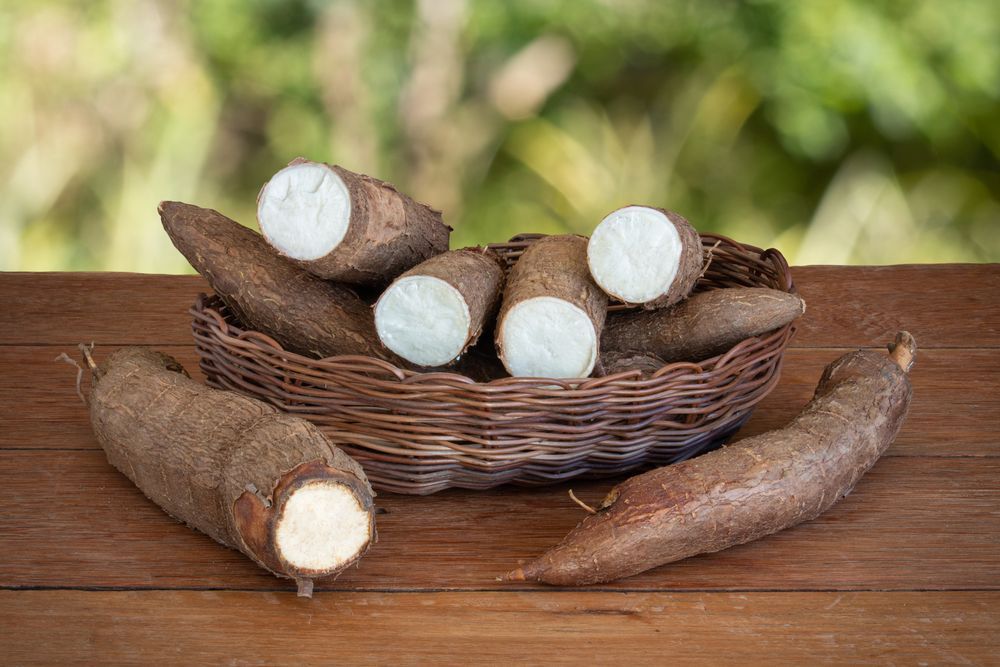Cassava Plant – How to Grow And Harvest Cassava
The cassava plant is an excellent source of carbs for humans and animals. If you’re thinking about growing this shrub in your garden, read on.
Cassava is not as tasty or nutritious as other foods, such as rice and wheat. Still, cassava is the staple food of many cultures, from the Taino in the Caribbean to the indigenous tribes in the Philippines. Nowadays, cassava remains an essential crop in many countries, such as Nigeria, Thailand, and Brazil.
If you’re interested in growing the cassava plant in your garden, you can do so if you live in zones 8 to 12. Despite the toxicity of raw cassava, you can safely consume this food after processing it, to use cassava in many exotic recipes.
This article describes how to grow the cassava plant in your garden, together with caring and harvesting tips. But first, let’s discover the facts, types, and uses of the cassava plant.
Table of Contents
Let’s start with some facts about the cassava plant.
Cassava Plant Facts
Cassava (Manihot esculenta) is a perennial shrub, deeply rooted in human civilization. A native of Brazil, cassava spread across Latin America before the Portuguese and Spaniards arrived with their ships and helped introduce it to the rest of the world.
Here are some interesting facts about the cassava plant:
- Cassava goes by many names, according to each region, such as yuca, tapioca, and manioc.
- The cassava plant is starchy, grows about 14 feet tall and spreads 10 feet across. So you need plenty of space in your garden to grow more than one plant.
- The only edible part of yuca is its root.
- Similar to sweet potatoes, cassava produces tubers that are long and taper off at one end. The tuber of cassava is 6 – 12 inches long and 2 – 4 inches thick at the fat end.
- The rind of cassava is usually brown and easily detachable. And the flesh is white and smooth.
- Raw cassava is toxic for humans and pets. The tubers of cassava contain considerable amounts of cyanide, which can cause goiters, paralysis, and death. But if the tubers are properly processed, this will remove the toxins, making the root of cassava safe for consumption. Properly processing the tubers means soaking, drying, and scraping them.
- As far as production is concerned, cassava is the third largest source of carbs for humans and animals in tropical regions, after maize and rice.
In the next section, discover the types of cassava.
Types of Cassava
The cassava plant is widely spread across South America, Africa, and Asia. And many cultures depend on it. Despite this fact, there are only two types of cassava plants: sweet and bitter. Here’s what you should know about each type:
- Sweet Cassava: This is a deceptive name because all types of cassava have only trace amounts of sugar. But sweet cassava has less cyanide and a more delicate flavor than bitter cassava. The plants of sweet cassava produce more tubers on average, and the roots of sweet cassava are easier to process. If you want to grow sweet cassava in your garden, consider these varieties: Macan, Golden Yellow, Brasil, and Katabang.
- Bitter Cassava: This type of cassava has alarmingly high cyanide concentrations in the tubers. Processing the tubers of bitter cassava is quite an ordeal, so it’s best to avoid growing this type of cassava at home for safety concerns.
In the next section, find out how to use cassava.
Cassava Uses
If you intend to grow the cassava plant in your garden, here are some ways in which you can benefit from it:
- Human Food: Cassava is an excellent substitute for potatoes and wheat in tropical regions. After curing cassava, it can be ground into flour to make cassava bread, cakes, and cookies. Brazilians use cassava starch as a condiment or toast it in butter.
- Alcoholic Beverage: This is the main reason the global production of cassava exceeds 278 million metric tons per year. The tubers of the cassava plant can be used to make local beverages. For example, Brazilians drink tiquira, Mozambicans make impala, Peruvians prepare masato, and the Guyanese prefer their local parakari.
- Biofuel: The starch of the cassava plant is an excellent source of ethanol, an eco-friendly fuel. China is leading the world in producing biofuel from cassava, thanks to an annual production of 200,000 tons.
- Animal Food: The tubers and leaves of the cassava plant are a fantastic source of food for livestock. Although the tubers are poor in protein, the leaves make up for it.
- Starch: If you use starch to do your laundry, chances are that the commercial product contains cassava.
In the next section, find out how to grow the cassava plant.
How to Grow the Cassava Plant
Unlike other plants that produce tubers, you can’t use the roots of cassava to start a new plant. Instead, you need stem cuttings. So you need access to a mature and healthy plant. For instance, you can search your local nursery for cassava cuttings.
The following instructions teach you how to grow the cassava plant from stem cuttings:
- After harvesting a healthy cassava plant, gather the stems and set them aside in a cool and dry place. Choose 1 – 1.5-inch-thick stems.
- Allow the stems to sit for at least 10 days before planting them.
- If you live in zone 8 or 9, pick a spot in the garden that gets full sun. If you live in zone 10, 11 or 12 where the summer sun can get too intense, plant the cassava plant in partial shade.
- Wait until the last frost is over and till the soil. Turn over the top 12 inches of the soil to make it easier for the roots of the cassava plant to develop.
- Mix in a good amount of aged manure or organic compostto improve the drainage and texture of the soil.
- When it’s time to plant, trim the stems into small cuttings (about 8-10 inches each). Also, ensure that each cutting has at least 4 growth buds.
- Arrange the bed into small mounds or rows – about 5 feet apart.
- Water the bed to get the soil thoroughly moist before planting the cassava cuttings.
- Dip the end of the cassava cutting into growth hormone powder, shake off the excess, and plant the cutting on the mound or ridge 3 inches deep.You can plant the cutting upright or slanted, as long as half the growth buds are buried underground.
- Space the cuttings 8 – 10 feet apart and keep the soil moist until the roots develop.
In the next section, check out the cassava caring conditions.
Cassava Care
Cassava doesn’t need much care on your part. You must water the plant regularly and protect it from sudden temperature drops. But other than that, the cassava plant practically grows hassle-free. Even feeding is unnecessary if the soil is rich by nature.
This section gives you useful information for caring for the cassava plant regarding soil, light, temperature, fertilizer, water, pruning, and pests and diseases.
Let’s start with the soil conditions.
Soil
Cassava is a hardy plant that grows and thrives regardless of the soil or its chemical structure:
- The plant doesn’t mind growing in any one of the three types of soil: loamy soil, clay, or sandy soil. So amending the soil is unnecessary.
- Despite the plant’s hardiness, it’s a good idea to get the soil as loamy as possible, to make sure the roots take hold quickly and the tubers grow to their full length.
- To improve the draining of the soil and make it easier for the roots to grow, add coarse sand and loosen the texture of the soil.
- The pH level of the soil can be neutral, slightly acidic, or slightly alkaline.
In the next section, discover the light conditions.
Light
The cassava plant favors sunlight, so it develops healthy tubers under sun exposure. And the hardiness zone you live in will determine how much sunlight the plant needs:
- In hot zones where the summer sun gets too intense, the plant will suffer under such prolonged exposure, resulting in leaf burn. In this case, it’s best to provide partial shade during the summer afternoons.
- In warm-to-moderate zones, pick a sunny spot where the cassava plant can receive up to 8 hours of sunlight without any issues.
- In cooler zones, you might have to grow the yucca plant in a container, bring it indoors, and use growing lamps to provide adequate light conditions.
In the next section, check out the temperature conditions.
Temperature
Light and temperature usually go hand in hand with the cassava plant:
- Yuca requires constant high temperatures of 70 – 85 degrees F (21 – 30 degrees C) during the growing season and until harvest time. So you must live in a hardiness zone between 8 and 12 to be able to grow this plant in your garden.
- Cassava takes long months to mature. And any temperature drop can disrupt the harvest.
- If the temperature drops under 60 degrees F (16 degrees C) and remains so for a long time, the cassava plant stops growing. And the crop won’t be healthy anymore. So avoid exposing the plant to frost and take it indoors in case of unforeseen weather conditions.
In the next section, discover the fertilizing conditions.
Fertilizer
For the most part, your cassava plant won’t need feeding if you rotate your crops. You should plant it after corn and plantains to give the soil time to rest.
If you notice that the cassava plants aren’t growing well, side-dress them with aged manure or custom fertilizers high in potassium. Apply the fertilizer once a month until the middle of summer.
In the next section, learn about the water requirements.
Water
The cassava plant handles drought better than many other plants. But it still needs regular watering since you’re growing yuca for its tubers and not to stress-test the plant.
Provide the cassava plant with the standard water quota of 1 inch a week. If it rains heavily, though, skip watering until the rainfall ends.
If you have unamended clay soil, there’s a chance the soil gets waterlogged. This could lead to root rot, which is devastating for yucca. So hold off watering until the top 2 inches of the soil are completely dry. Then give the soil a deep watering to reach the deep roots of the cassava plant.
In the next section, learn about pruning.
Pruning
As is the case with all shrubs, things can get out of hand easily with the cassava plant if you don’t step in with your pruning shears. That’s because cassava gets leggy pretty quickly. So trim off the stems to keep the plant looking tidy; the pruning frequency depends on the variety you grow.
After harvesting the tubers of the cassava plant, you can cut back the shrub by about 1/3. Remove any damaged or broken stems and make inroads into the dense foliage to improve air circulation. Pruning also allows you to manage the size of the plant and keep it compact.
In the next section, find out about pests and diseases.
Pests and Diseases
Since the leaves of cassava are high in protein and the tubers are rich in carbohydrates, the plant is a natural magnet for thrips, chinch bugs, and cassava shoot fly. Here’s how to treat each of these pests:
- Thripssuck the sap out of the leaves, causing them to wilt and reducing the crop. Thrips are easy to detect since they make holes in the leaves. To get rid of thrips, treat them with neem oil spray.
- Chinch bugs are tiny insects that live in the soil and create holes in the tubers. To get rid of chinch bugs, plant rattlepod as a cassava companion.
- The cassava shoot fly feeds on the tips of the young shoots, stunting the growth of the cassava plant. The damage of the cassava shoot fly is temporary, and the plant recovers quickly, so you just have to wait it out.
As far as diseases are concerned, cassava bacterial blight is serious and untreatable. It’s usually transmitted through contaminated growing mediums and tools. To prevent the spread of the cassava bacterial blight, use clean soil and sterilize your gardening tools before use.
In the next section, find out how to harvest cassava.
Harvesting Cassava
Cassava tubers take 9-11 months to ripen. Harvesting signs are yellowing leaves. So once you spot yellowing leaves, cut the stems of the cassava plant down to 8-12 inches; this allows the plant to focus on the tubers and fill them up with starch.
You can dig up the tubers of the cassava plant exactly 2 weeks after cutting the stems. Don’t leave the tubers in the soil any longer than that since the starch will turn to sugar, and the tubers become brittle when cooked.
The next section gives you more information about cassava.
FAQ
This section provides you with simple answers to common questions about cassava.
Is cassava flour gluten-free?
Yes, cassava flour is gluten-free.
Is cassava flour keto?
No, cassava flour isn’t keto because it’s loaded with carbs.
How do you get rid of cyanide in cassava?
To get rid of cyanide in cassava, you have to boil or cook the plant.
The next and final section summarizes the entire article on the cassava plant.
Conclusion
To review, cassava is a plant with numerous health benefits, despite its toxicity. Now you know how to grow and care for this plant in your garden. Just make sure to pick sweet cassava since it’s best to avoid bitter cassava for safety reasons.
What are your favorite tips for growing the cassava plant? Share your tips in the comments below!
